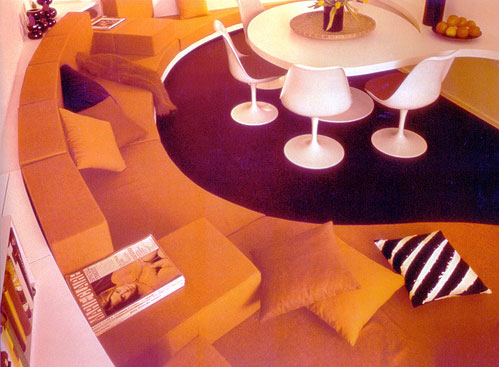Pop art, as an art movement, originated in America in the 1950s, but it gained mass popularity by the early to mid-60s of the twentieth century. The name comes from an abbreviation of popular art, that is, popular (mass) art. A distinctive feature of this style is that it raises ordinary, everyday objects from the everyday world around us to the rank of works of art, images of people, most often celebrities. The favorite techniques of artists and designers when working on the interior and furniture in the pop art style is to copy the object, changing its scale and proportions. The color scheme differs from the prototype of the real object, it is bright, juicy. A favorite technique is collage, stenciling and copying.
To better understand the phenomenon of Pop Art, let’s turn to the most famous works of this style. The first manifestation of Pop Art in art is considered an ordinary white toilet bowl, which Marcel Duchamp exhibited, declaring it a “finished object.” Robert Rauschenberg made collages by combining oil paint and clippings from newspapers and advertisements. Roy Lichtenstein drew inspiration from comic books, enlarging pictures to large sizes, sometimes so large that the picture was perceived as abstraction. Claes Oldenburg in 1961 exhibited a series of giant cakes made of plaster and painted in bright colors. He later continued this series by making car-sized pieces of cake and hamburgers, sewn together from sailcloth and plush. Artist George Siegel made an installation in which he placed plaster figures of people among real furniture.
Pop-art (pop art, short for popular art – jerky blow, clap, popular, public art) is a movement in the art of the 1950s, which originated in England and became massively popular in the 1960s in America. The trend, the most famous representative of which is considered to be Andy Warhol, arose as a reaction to the modern mass culture of the consumer society and abstract expressionism, which supporters of Pop Art considered too complicated and elitist.
Pop-art (pop art, short for popular art, a jerky beat, clap, popular, public art) is a movement in the art of the 1950s, which originated in England and gained mass popularity in the 1960s in America. The movement, the most famous representative of which is considered Andy Warhol, appeared as a reaction to the modern mass culture of the consumer society and abstract expressionism, which supporters of Pop Art considered too complicated and elitist.
Pop art openly denied art nouveau and its values. A distinctive feature of the style – to the rank of works of art elevated ordinary, everyday objects from the surrounding world, images of comic books, celebrities, logos of famous brands – and all this is mixed bright colors and whimsical shapes. The main emphasis was on variety, fun and short-lived, disposable items, cheapness and mass consumption.
Designers got into the business of producing things the consumer wanted, not the things they needed. The main themes of pop art were media and advertising, and the objects were images of mass culture reflecting the spirit of the era. Vivid, provocative, and provocative, the style attracted unconventional personalities.
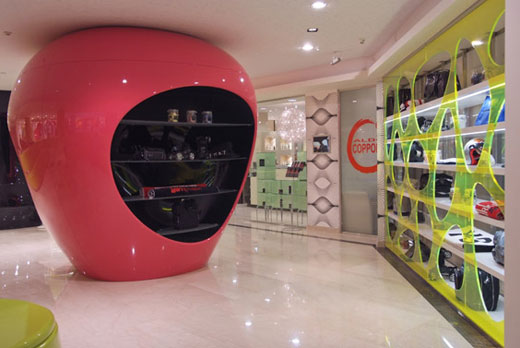
The most famous works of the Pop Art style: Robert Rauschenberg’s collages, a combination of oil paint and clippings from newspapers and advertisements; the white toilet bowl that Marcel Duchamp exhibited, declaring it a “finished object”; Roy Lichtenstein’s oversized comic book pictures, which were seen as abstraction; Claes Oldenburg’s giant cakes made of painted plaster, as well as car-sized pieces of cake and hamburgers sewn from sailcloth and plush; plaster human figures among real furniture by artist George Siegel; Andy Warhol’s “thirty better than one” (one black-and-white silkscreen print contained 30 reproductions of Joconda); the copying technique was used in depicting celebrities (Marilyn Monroe et al. ), objects and products (a can of soup, a dollar bill, a bottle of Coca-Cola); works by Jasper Johns, James Rosenquist.
Pop design was inseparably linked to the American dream of the consumerist worldview that had taken hold of the West in the early ’60s. It was a breakthrough in the philosophy of industrial production and design. Pop design, with its bright colors, bold shapes, and cheap goods, was a style for the young. The most popular materials for pop designers were various kinds of plastics, which attracted low prices and a variety of colors.
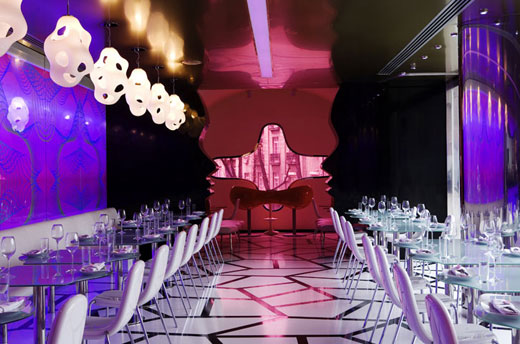
The main ideas of pop art were adopted by industrial and interior designers, artists and decorators. In the interior – furniture in the form of women’s bodies, characters from movies, everyday objects. Interior items began to be made in the form of an image borrowed from everyday life or from the TV screen (glowing dishes, bright rugs, plastic chairs).
The favorite method of designers when working on interiors and furniture in the Pop Art style is to copy the object, changing its scale and proportions, playing with color and quantity. Pop art was created to surprise. Everything here is expressive, contrasting, bright. The color scheme is different from the prototype of the real object, it is bright, juicy, neon. The favorite technique – collage, stenciling and copying, both for the accent (posters and paintings), and for the background (wall tiles, carpets with a replicated pattern). Excessiveness in pop-art does not happen – here is allowed a mixture of different colors and textures, the use of bright (up to acidic), saturated colors, eye-catching forms, energy, explosion of emotions. The main interior color is white or pastel tones, in addition – a combination of several bright colors. The colors contrast and contrast, and rarely complement each other. The combination of incongruity is in the spirit of pop art.
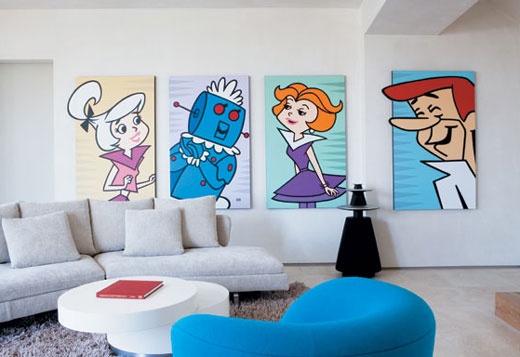
The main materials: synthetics, plastic, paper, metal. The furniture is characterized by abstract patterns, garish colors, glossy surfaces and plastic.
In the interiors there is a minimum of furniture and built-in cabinets, hiding the excess of items. Walls can be different colors, as well as textiles. Textiles are bright and variegated, chosen in the main color scheme. Stylized plastic accessories: clocks, photo frames, figurines, vases, lamps and candlesticks, painted leather and bright metal (chrome) details in the interior. As a decor you can use any manifestation of modern pop culture – from modern art objects (photographic, drawn images of large size; paintings) to homemade panels of beer coasters. In this sense, pop art can be called an inexpensive style, it will suit fans of “handmade”. At the same time, it is important to maintain the line between creativity and dumping things.
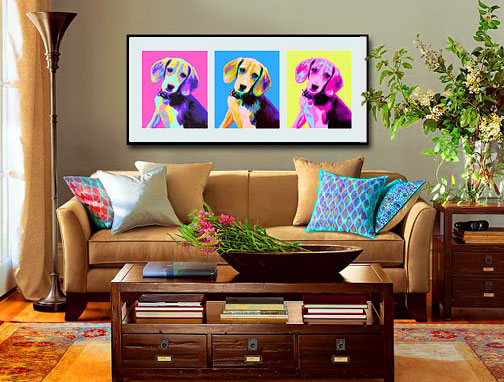
One of the solutions of pop art: one of the walls is light, two more – contrasting bright colors, the fourth is made in the technique of repetitive small patterns. Pop art style is characterized by a psychedelic effect, which can be achieved by using wallpaper with the effect of optical illusion, disappearing and appearing pattern, as well as paintings and drawings.
Pop art was born in New York lofts and bohemian studios, for its embodiment you need spacious rooms. Otherwise you can focus on the details, stylize the interior for the desired image. In pop art, the “laws” of the ceiling, floor and walls are not respected, they can move seamlessly into each other, their boundaries are “blurred” by visual solutions.
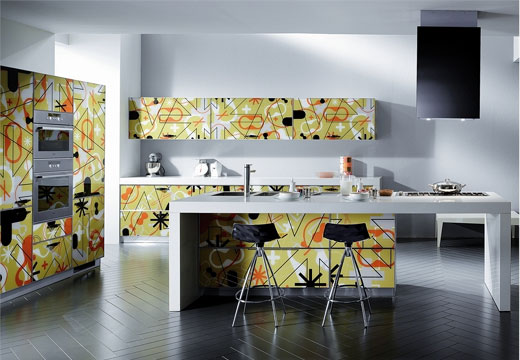
The ceiling can be different levels, with backlighting of different colors. In the case of a single-level ceiling, glossy coatings are preferred. For the floor you can choose as a floor covering of a calm color scheme, making an accent on the interior, or use a carpet of saturated color or ceramics with a chaotic catchy pattern.
The furniture is characterized by flat, rounded shapes, some unusual – in the style of “retro-futurism”, bright colors, sofas and chairs of round forms, typical for the 60’s, poufs and small tables, bright plastic. Ornaments, drawings from comics and graffiti are appropriate on furniture.
Pop Art in interior design looks quite expressive and unusual, and is often used to decorate clubs, stores, youth cafes, beauty salons and leisure centers. Bright images, shapes, bright colors, bold combinations and non-standard solutions attract the eye, focus attention, creating an atmosphere of celebration.






